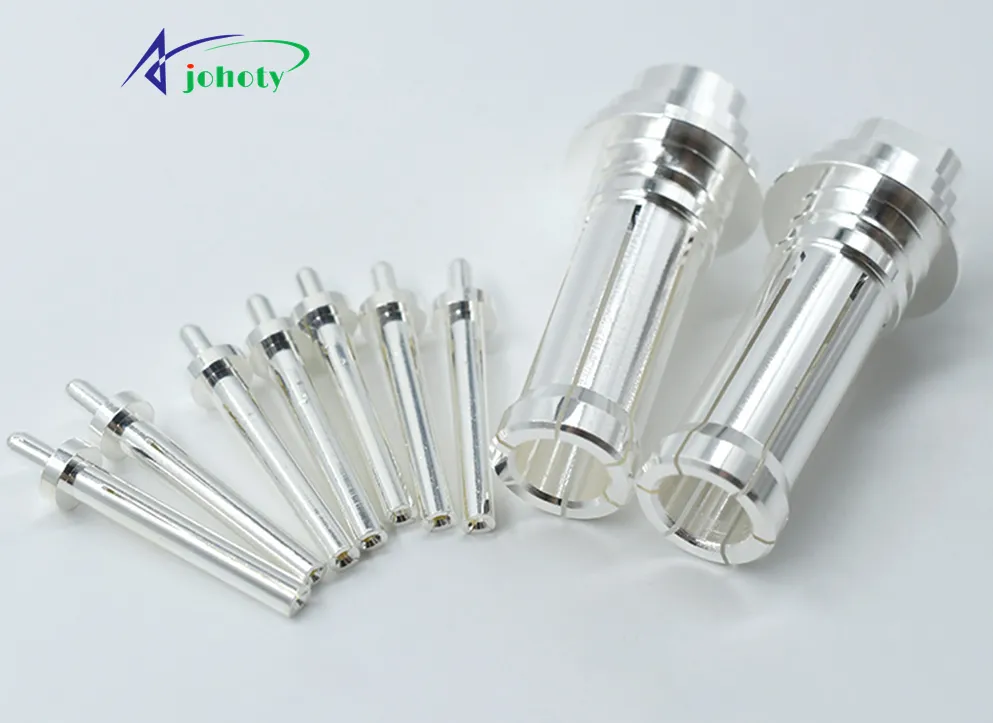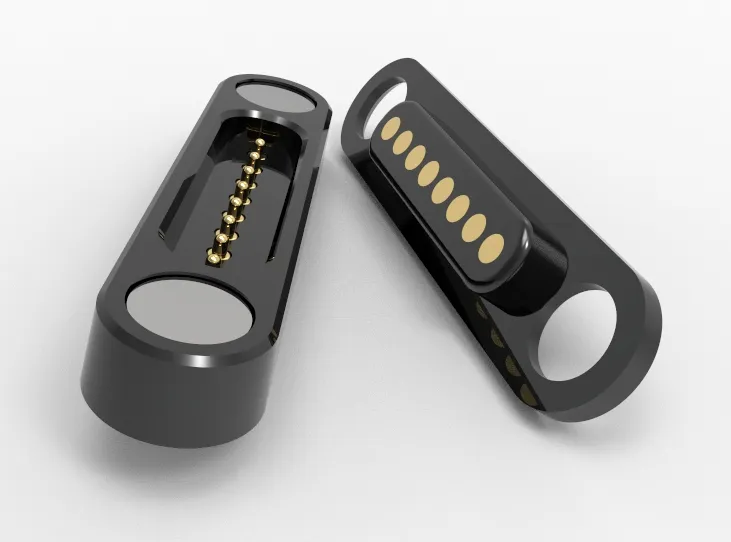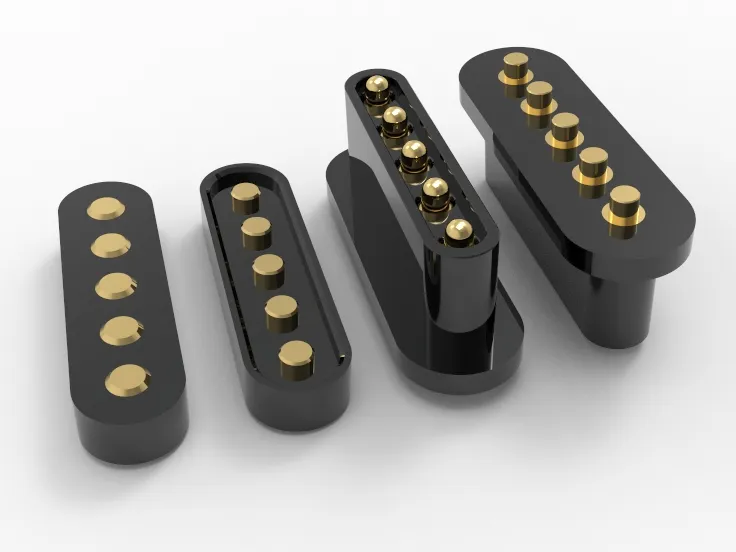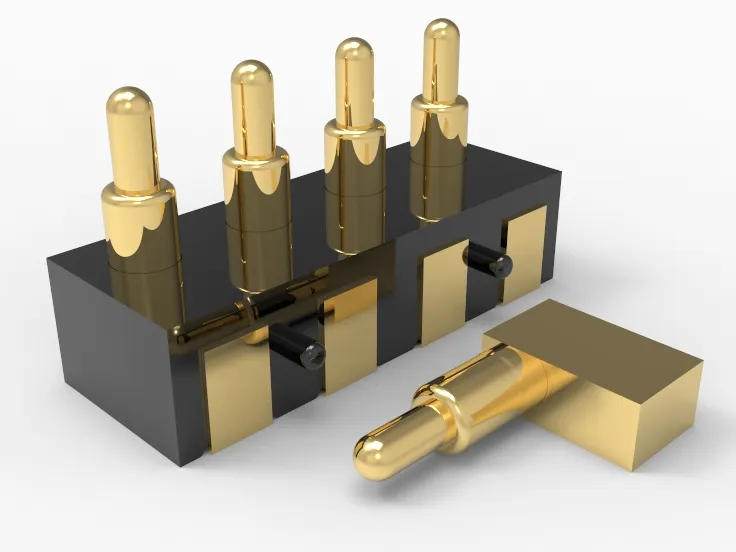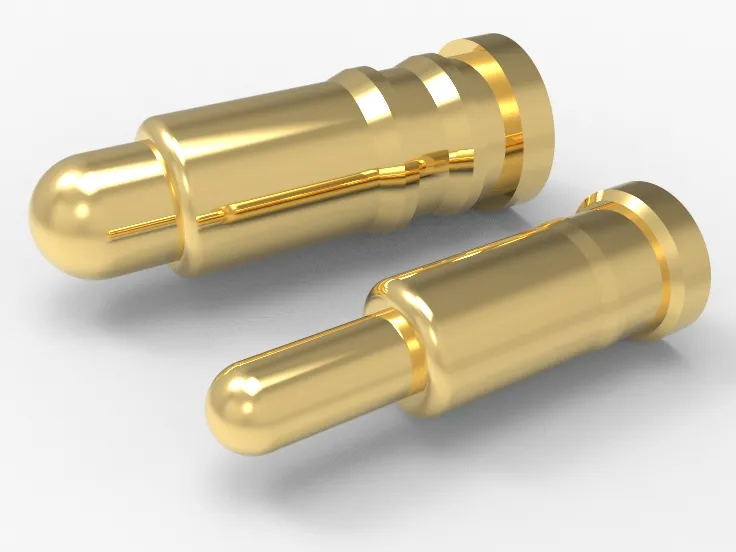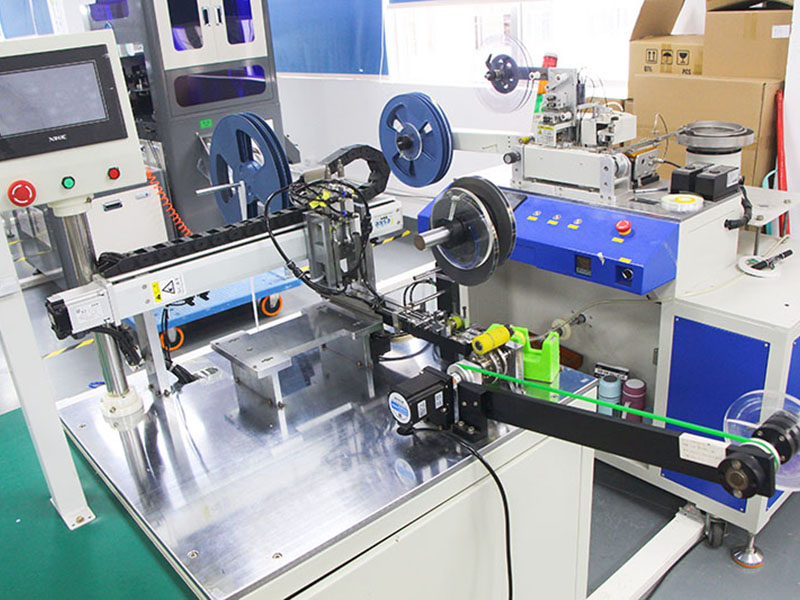What Is a High Temperature? Learn the Impact of High Temperature on Pogo Pin Connector Stability and How to Maintain Its Optimal Performance
Introduction:
In today’s fast-evolving tech world, the performance and reliability of electronic devices are more critical than ever. In hot environments, the dependability of connectors is especially crucial. Pogo Pin connector, widely used in electronic testing and manufacturing, play a significant role in maintaining overall device stability and longevity under high heat.
So, what is the “high temperature” limit for Pogo Pin connector? What challenges do the connectors face in such conditions? This article will explore these issues in depth, providing insights on how to ensure Pogo Pin connector remains stable in high temperature settings and maintain reliable device operation. Whether you’re an engineer or a procurement decision-maker, understanding these key points will help you make more informed choices.
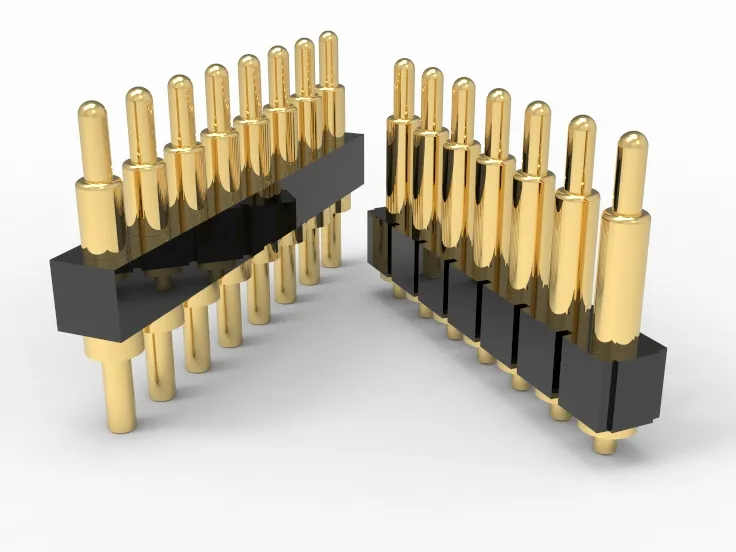
1. Overview of Pogo Pin Connector
1.1 Overview:
Pogo Pin connector, also known as spring pin connectors, features a spring mechanism and is used extensively in testing, transmission, and electrical connections. Their core components include pins, springs, insulation sleeves, and housings. The main advantage of Pogo Pin connector is their spring contact design, which ensures stable electrical connections when connecting or disconnecting devices, while accommodating mechanical misalignments.
1.2 Operating Principle
Pogo Pin connector achieves electrical connectivity through its internal spring mechanism. The pins maintain contact with the socket via springs, ensuring stable signal transmission. When a Pogo Pin connector is inserted into a socket, the spring compresses, bringing the pin into tight contact with the socket’s contact points, thereby establishing an electrical connection. The spring design allows for some mechanical displacement and vibration, enhancing connection stability.
2. Performance of Pogo Pin Connector in High Temperature Environments
2.1 Effects of High Temperature on Spring and Insulation Materials
2.1.1 Impact on Spring Materials
- Material Changes: Springs in Pogo Pin connector, usually made from stainless steel or nickel-titanium alloys, can change physically and chemically at high temperatures. Heat can reduce the spring’s elasticity, making it softer and affecting mechanical performance. This can lower the spring’s rebound, impacting contact pressure and reliability.
- Thermal Expansion: High temperatures cause springs to expand, altering their size. This can affect how well the spring fits with other connector parts, impacting overall stability and contact effectiveness.
- Accelerated Wear: Heat speeds up oxidation and corrosion of the spring material, especially in damp or chemical environments. This wear degrades performance, reducing the connector’s durability and lifespan.

2.1.2 Impact on Insulation Materials
- Thermal Aging: Insulation materials, such as epoxy or polyimide, undergo thermal aging at high temperatures. This breaks down their chemical structure, reducing insulation effectiveness and increasing the risk of short circuits and leakage.
- Thermal Expansion and Contraction: These materials expand with heat and contract when cooled, causing mechanical stress between the core and other parts. This can lead to cracking or detachment, affecting sealing and stability.
- Hardness Changes: Heat softens insulation materials, reducing their mechanical strength. This change can weaken the connector’s structure, affecting its reliability in high temperatures.
- Release of Gases and Chemicals: High temperatures can cause insulation materials to release volatile organic compounds or other gases, which may affect connector performance and environmental cleanliness.
High temperatures impact Pogo Pin connector in several ways. Spring materials experience reduced elasticity, thermal expansion, and accelerated wear, affecting mechanical performance. Insulation materials face thermal aging, expansion/contraction issues, hardness changes, and gas release, impacting insulation and structural stability. Designing and using Pogo Pin connector requires attention to these high temperature effects to ensure reliability and performance in extreme conditions.
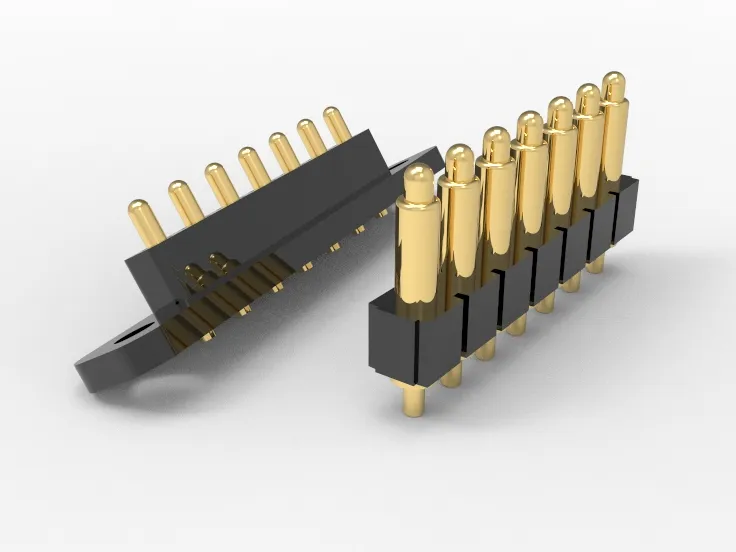
2.2 Performance Changes of Pogo Pin Connector in High Temperatures
2.2.1. Electrical Contact
- Reduced Conductivity: At high temperatures, Pogo Pin connector can experience increased resistance in conductive materials. This can weaken signal transmission and cause data errors, especially when temperatures exceed the connector’s rated limits.
- Oxidation of Contact Points: High temperatures can lead to oxidation at contact points, increasing contact resistance and reducing conductivity. Prolonged exposure to heat can worsen this issue, leading to poor electrical connections.
- Changes in Contact Force: The elasticity of springs and contact materials may decrease with heat, reducing contact force. This affects the stability of the connection and raises the risk of poor contact.
2.2.2. Mechanical Stability
- Thermal Expansion: High temperatures cause materials in Pogo Pin connector to expand, potentially disrupting the mechanical fit of connector components. Different materials stretch and shrink at varying rates, which can impact how stable things are overall.
- Mechanical Fatigue: Increased thermal stress can lead to mechanical fatigue in springs and other parts. Over time, this can cause springs to lose their elasticity and other components to wear out, compromising stability and reliability.
- Reduced Solder Strength: Heat can weaken solder joints by causing the solder material to melt or flow. This can affect the stability of the connector’s attachment to the board and may lead to solder joint failure.
In high temperature environments, Pogo Pin connector faces changes in electrical contact and mechanical stability, including reduced conductivity, oxidation, and contact force changes, as well as thermal expansion, fatigue, and weakened solder joints. To ensure reliability, it’s crucial to select materials suited for high temperatures and implement protective measures during design and manufacturing.
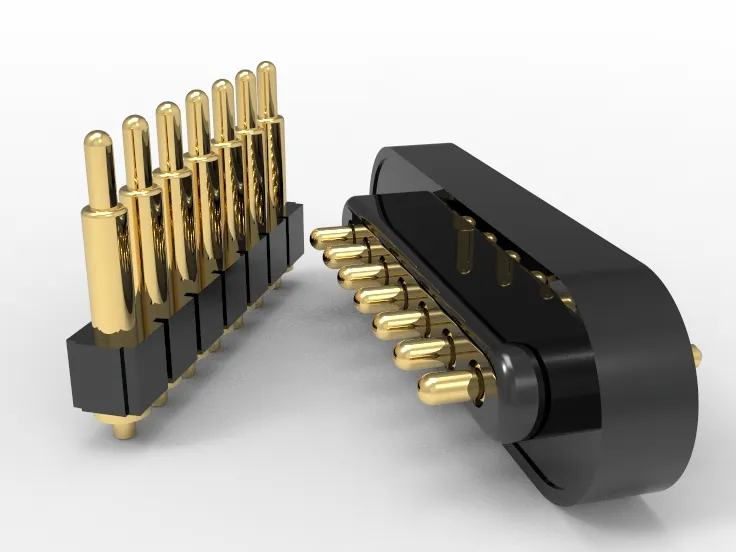
3. Specific Effects of High Temperature on Pogo Pin Connector
3.1 Electrical Performance:
- Increased Resistance: High temperatures raise the resistance of the pogo pin’s conductive materials (usually copper) because metal atoms vibrate more, making it harder for electrons to move. This might cause delays or interruptions in how signals get transmitted.
- Reduced Current Capacity: Heat can expand the metal parts of the connector, increasing gaps and decreasing conductivity. Prolonged heat exposure can also cause material aging and oxidation, further reducing current capacity.
- Material Aging: High temperatures speed up the aging of insulation (like plastic or resin) and spring materials (like stainless steel). This can decrease insulation performance and elasticity, leading to poor contact or breakage.
- Thermal Expansion and Contraction: Materials in the connector expand with heat, potentially causing stress and affecting performance. When temperatures return to normal, contraction can result in poor contact and unstable connections.
- Increased Contact Resistance: High temperatures can cause oxidation or contamination at contact points, increasing contact resistance and potentially causing data errors or equipment failures.
3.2 Mechanical Performance:
3.2.1 Changes in Spring Force:
- Thermal Expansion: Heat can cause spring materials (typically stainless steel or alloys) to expand, reducing their elasticity and altering their effective length, which can decrease spring force and affect connection stability.
- Thermal Aging: Heat accelerates the aging of spring materials, reducing their hardness and elasticity over time, which diminishes spring force and long-term reliability.

3.2.2 Changes in Contact Pressure:
- Reduced Pressure: Thermal expansion may decrease the spring’s force, reducing contact pressure and potentially leading to poor electrical and mechanical connections.
- Wear and Oxidation: High temperatures can accelerate wear and oxidation at contact surfaces, increasing resistance and affecting signal quality.
3.2.3 Decreased Mechanical Performance:
- Spring Fatigue: Repeated stretching and bending in heat can wear out the material, making the spring less effective at maintaining contact pressure.
- Deformation of Contact Points: High temperatures can cause deformation or loosening of contact points, leading to uneven pressure and affecting connection reliability.
3.2.4 Cumulative Long-Term Effects:
- Extended Exposure: Prolonged exposure to high temperatures can gradually reduce spring force and contact pressure, decreasing the connector’s reliability over time.
High temperatures impact pogo pin connector in various ways, affecting electrical performance, material aging, and mechanical stability. Design and usage must account for these factors and include proper thermal management to ensure reliable and stable performance in high temperature environments.
3.3 Long-Term Stability:
High temperatures significantly impact the longevity and reliability of pogo pin connector:
- Material Aging: Heat speeds up the aging of insulation materials like plastic and rubber, making them hard and brittle, which reduces insulation quality and connector durability.
- Decreased Conductivity: High temperatures can expand metal contacts, changing their shape and affecting contact pressure and conductivity. Metal may also oxidize, further lowering conductivity.
- Poor Contact: Heat can cause springs in pogo pin connector to fail or deform, reducing their ability to maintain stable contact force, leading to unreliable connections and signal issues.
- Thermal Expansion and Contraction: Different parts of the connector expand and contract with temperature changes, which can create gaps or misalignments, affecting connection stability and causing physical damage.
- Long-Term Performance Impact: Prolonged exposure to high temperatures shortens the connector’s lifespan. Issues like material aging, metal oxidation, and poor contact accumulate, leading to early failure.
- Degraded Electrical Performance: As insulation and conductivity degrade, the connector’s electrical performance drops, resulting in signal loss and increased noise, affecting overall device function and reliability.
To ensure the Pogo Pin connector performs reliably in high temperatures, use materials that can handle the heat and design an effective cooling system. Regular inspections and maintenance are also crucial. High temperatures can affect both the immediate performance and long-term reliability of the connectors.
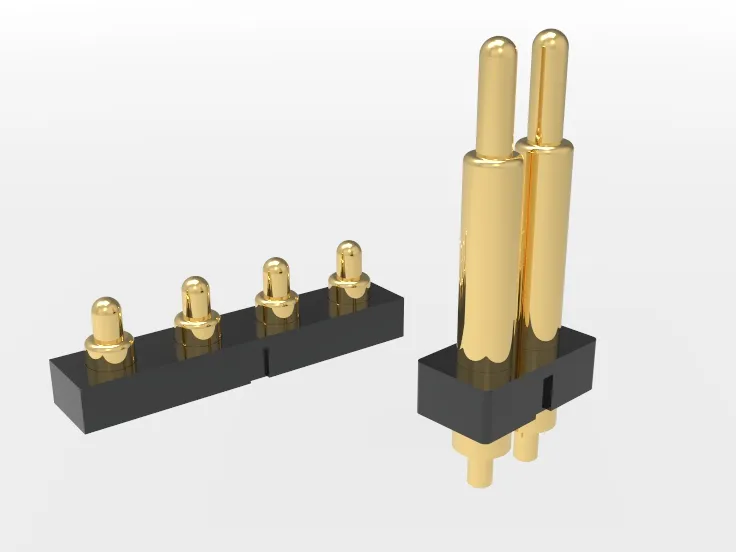
4. How to Improve the High Temperature Stability of Pogo Pin Connector
Ensuring the high temperature stability of Pogo Pin connector is crucial for their long-term reliability and performance. Here are some detailed suggestions:
4.1 Material Selection and Improvement
- Choose High Temperature Materials: Choosing materials that handle high temperatures well is essential. Common materials include polyimide (PI), polyphenylene sulfide (PPS), and high temperature silicone. These materials have high thermal deformation temperatures and excellent thermal stability.
- Improve Spring Materials: The springs in Pogo Pins are usually made of stainless steel or nickel-cobalt alloys. These materials need to maintain elasticity and conductivity at high temperatures. Using heat-treated spring steel can retain elasticity and prevent material degradation in high temperatures.
- Optimize Coatings: Coating materials can boost their ability to resist oxidation and corrosion in hot conditions. Common coatings include gold and silver, which prevent metal oxidation or corrosion, maintaining good electrical conductivity.
- Enhance Contact Design: Ensure stable electrical contact in high temperature conditions. High precision contact structures and optimized contact pressure designs can maintain stable connection performance. Consider thermal expansion effects in the design to ensure connector stability at high temperatures.
- Strengthen Thermal Management: Good thermal management can extend the lifespan of Pogo Pin connector in high temperature environments. Consider adding heat dissipation features, such as heat sinks or conductive materials, to lower operating temperatures and improve stability.
- Conduct Reliability Testing: Perform reliability tests in high temperature environments before actual use. This includes high temperature aging tests and thermal cycling tests to ensure the connectors can work normally in long-term high temperature conditions.
- Use Specialized Alloys: Employ high temperature alloys like nickel-based alloys, which maintain excellent mechanical and conductive properties in high temperature environments.
4.2 Structural Design Optimization
- Contact Point Design: Optimize the contact point design to increase contact area and improve contact elasticity, ensuring stable electrical contact in high temperature environments. Use high elasticity alloys or coating materials for better contact stability.
- Heat Dissipation Design: Incorporate heat dissipation channels or heat sinks in the connector design to help dissipate and reduce the impact of high temperatures. Optimizing heat dissipation design can effectively lower the temperature rise during operation, maintaining stability.
- Structural Reinforcement: Strengthen the internal structure of Pogo Pins, such as using double spring structures or reinforced structural supports, to enhance overall stability and high temperature performance.
4.3 Manufacturing Process Improvements
- Coating Optimization: Enhance the coating process for Pogo Pin connector to ensure stability at high temperatures. Use advanced materials like gold, nickel, or palladium and modern coating techniques such as Chemical Vapor Deposition (CVD) or Physical Vapor Deposition (PVD) for better heat resistance and durability.
- Heat Treatment Enhancement: Refine heat treatment methods to boost the high temperature stability of Pogo Pins. Optimize annealing or quenching processes to maintain superior mechanical and electrical performance under high temperatures, and control treatment temperature and duration to reduce thermal deformation and aging.
4.4 Design Upgrades:
- Improved Heat Dissipation: Enhance the connector’s structure with better cooling channels to lower operating temperatures.
- Enhanced Contact Pressure: Develop a stronger spring system to maintain good contact pressure even at high temperatures.
4.5 Assembly Process Enhancements:
- Precision Alignment: Ensure accurate alignment of Pogo Pins to prevent poor contact due to assembly errors in high temperature conditions.
- Better Soldering Quality: Use high temperature solder and advanced soldering techniques to minimize aging and failure of solder joints.
4.6 Packaging and Protection
- Sealing: Integrate sealing structures into the connector design to prevent dust and moisture ingress in high temperature environments.
- Thermal Isolation: Design appropriate thermal isolation for Pogo Pins to reduce direct heat impact.
4.7 Usage Environment Control
- Environment Monitoring: Monitor the temperature of the working environment to ensure the connector operates within its designed high temperature range and avoid overheating.
- Temperature Compensation: Implement temperature compensation circuits to adjust the connector’s performance and maintain stability in high temperature environments.
4.8 Maintenance and Care
- Regular Inspections: Periodically check and maintain connectors, especially in high temperature applications, to address any issues caused by thermal expansion or material aging.
- Cleanliness: Regularly clean connector contact points to prevent dirt accumulation from affecting high temperature stability.
These measures effectively enhance the high temperature stability of Pogo Pin connector, ensuring reliable performance in harsh environments.
5. The Impact of High Temperatures on Pogo Pin Connector Stability
- Material Expansion in High Temperatures In hot environments, both the metal and plastic parts of Pogo Pin connector expand. This expansion can create gaps at the contact points, affecting electrical performance. At 85°C, we see noticeable expansion in the metal pins and plastic casing, which reduces contact pressure and may cause electrical instability.
- Decreased Conductivity High temperatures increase the resistance of metal parts in Pogo Pin connector, which degrades signal quality and current stability. At 100°C, resistance can rise from 0.1Ω to 0.2Ω, leading to signal delays and data errors.
- Solder and Insulation Degradation Elevated temperatures speed up the aging of solder joints and insulation materials. Solder may crack or detach, and insulation can become brittle or fail. Prolonged exposure to temperatures above 70°C can cause significant solder joint failure and brittle insulation, leading to connector failure.
- Mechanical Stability High temperatures can also affect the mechanical stability of connectors. Components may deform or loosen, affecting their lifespan and reliability. During high temperature tests, the spring parts of Pogo Pin connector may deform from thermal fatigue, leading to poor contact and loosening under vibration.
- Real-World Issues In practice, high temperatures can cause Pogo Pin connector to fail, impacting device performance. At 80°C, connectors often experience poor contact, leading to intermittent power loss or malfunction.
- Improvement Measures To enhance high temperature stability, Johoty implements measures like using high temperature materials and improving designs. Using high temperature alloys and optimized designs has significantly boosted connector stability and reliability in hot environments.
Summary
Temperature stability is crucial when designing and using Pogo Pin connector. High temperatures can cause poor contact, reduced performance, and even damage connectors, affecting overall system reliability and safety. We continue to monitor advancements in material science and connector design to meet the growing demands of harsh environments. Through ongoing innovation and improvement, we aim to deliver more reliable and efficient Pogo Pin connector for future applications.
Understanding how Pogo Pin connector performs in high temperatures is key to ensuring long-term reliability. By focusing on temperature stability, we can significantly improve the quality and performance of pogo pin connector. We hope this info gives you useful insights and encourages you to reach out for design and selection advice.


